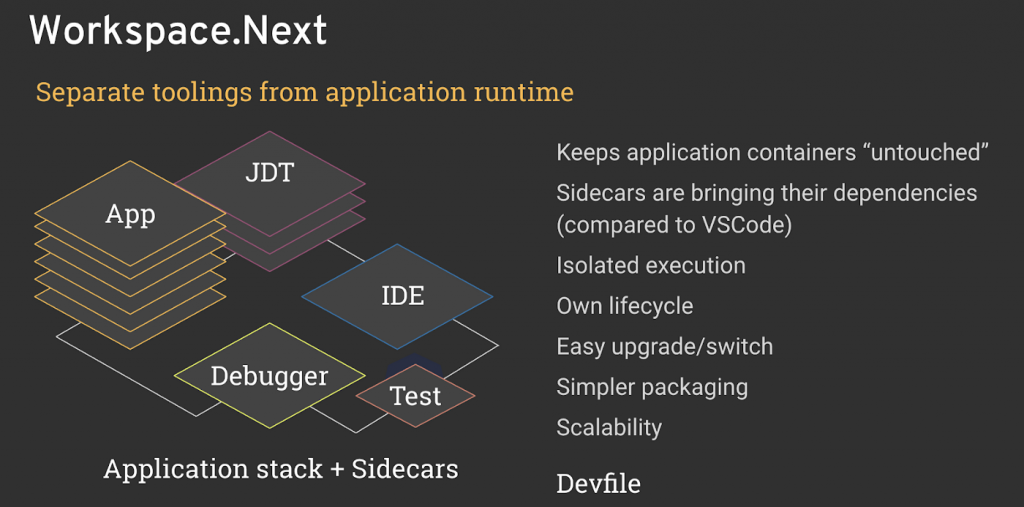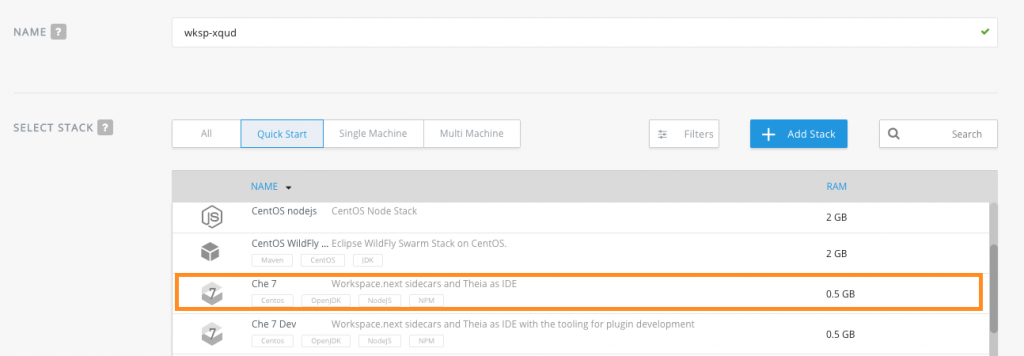With a new workspaces model and full “dev-mode” for application runtimes—Eclipse Che the first kube-native IDE!
In Part 1 of this series, I highlighted the main focus areas for Eclipse Che 7. Part 2 covered the new plugin model. This article explains the different changes that have been introduced for Che workspaces, in order to provide full “dev-mode” capabilities on top of application runtimes by sidecaring developer tooling.
Kubernetes native IDE
This new version of Eclipse Che makes it the first Kubernetes native IDE.
Developers using Eclipse Che use containers directly in their developer workspaces. Che workspaces provide a “dev mode” layer on top of the containers used in production, adding intellisense and IDE toolings.
The work on Workspace.Next allows Che to use bare application definitions (a Docker image, a Composefile or a list of Kubernetes resources) without the need to patch them to inject the IDE services. With Workspace.Next, IDE toolings are microservices packaged in their own sidecar containers, bringing their own dependencies and keeping application’s containers untouched. The execution of IDE toolings is isolated from each other and from the application’s containers too. Each IDE tool now gets its own lifecycle, the ability for easy upgrading or switching, and coming soon its own scalability mechanism.
To learn more, see the article: The New Superpowers of Che Workspaces.
Try Eclipse Che 7 Now!
Want to try to the new version of Eclipse Che 7? Here's how:
Click on the following factory URL:
https://che.openshift.io/f?id=factoryvbwekkducozn3jsn
Or Create your account on che.openshift.io, create a new workspace and select “Che 7” stack.
You can also test on your local machine, by installing the latest version of Eclipse Che, See Quick Start with Eclipse Che.
Want to learn more?
My articles about Eclipse Che 7:
- Part 1—Eclipse Che 7 overview, and introducing the new IDE
- Part 2—introducing the plugin model
- Part 3—Kube-native developer workspaces (this article)
- Part 4—Functionality for Enterprise Development Teams and release timing
That’s it for the third article introducing Eclipse Che 7. Part 4 will cover the new enterprise features and release schedule.
See also
For information about Che running on Red Hat OpenShift, see CodeReady WorkSpaces for OpenShift (currently in beta) and Doug Tidwell's article and videos, CodeReady Workspaces for OpenShift (Beta)–It works on their machines too. Doug covers stacks, workspaces, and factories to help you get started with Che.
Last updated: November 8, 2023

